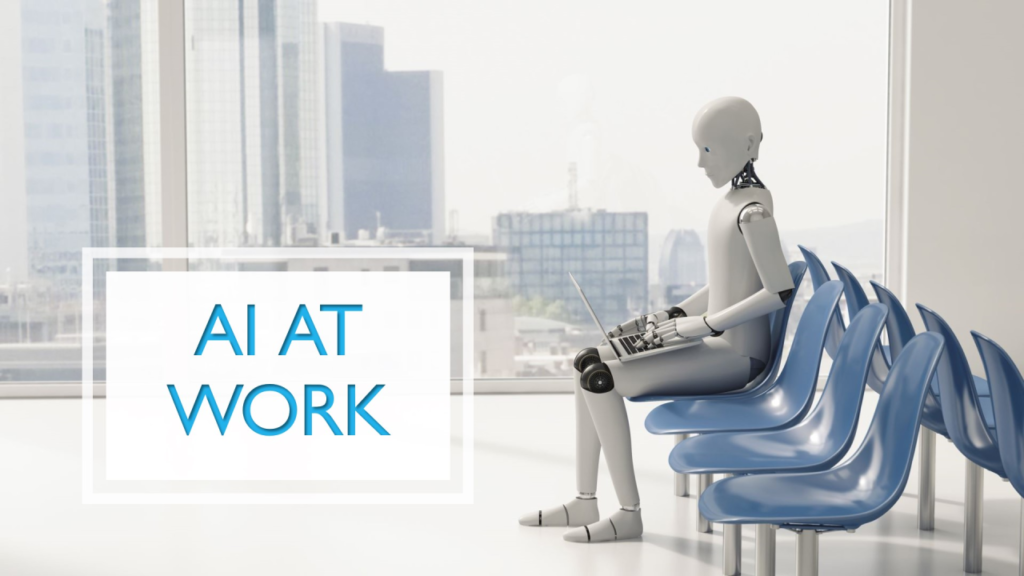AI at the Workplace

History is shaped by transformative moments that redefine how we live, work, and connect with the world. These moments are often so profound that they set humanity on an entirely new trajectory. As we stand at the cusp of the AI revolution, it’s worth reflecting on these defining milestones that paved the way for this era.
Defining Moments That Changed the World
- BC and AD: The Birth of Jesus Christ The division of time into BC (Before Christ) and AD (Anno Domini) marked a transformative period in human history. The birth of Jesus Christ laid the foundation for Christianity, a faith that has grown to become the world’s largest community. This moment not only shaped spiritual and moral frameworks but also influenced global cultures, philosophies, and societal structures, demonstrating how a single event can have an enduring impact.
- The Invention of Electricity The discovery of electricity revolutionized civilization, powering industries and enabling technological innovation. It illuminated homes, transformed transportation, and modernized healthcare. Electricity laid the groundwork for mechanization, automation, and eventually, the digital revolution—a precursor to the rise of AI.
- The Internet: A Connected World The internet became the nervous system of the modern world, collapsing physical boundaries and enabling instant global communication. It democratized access to information and created opportunities for innovation, collaboration, and commerce on an unprecedented scale. It also provided the infrastructure for AI to thrive, acting as the backbone for its development and deployment.
- Google: Democratizing Information Once, “information is power” meant knowledge was reserved for the privileged few. Google flipped this narrative by democratizing information, making it accessible to anyone with an internet connection. This levelled the playing field for education, research, and innovation, and laid the foundation for AI systems to build on this accessible knowledge base.
- Mobile Phones: A Connected Humanity The advent of mobile phones transformed personal and professional connectivity, bringing the world closer. Smartphones further amplified this connectivity by enabling instant access to social networks, digital services, and AI-powered applications, making these tools accessible to billions.
- Artificial Intelligence: From Lab to Life AI is not a new concept. Its origins date back to 1945, with significant progress in academic and corporate labs. However, it was Sam Altman’s ChatGPT that truly democratized AI, taking it from the confines of research facilities and corporate organizations to everyday users. Generative AI tools like ChatGPT are now accessible to anyone with an internet connection, marking a transformative moment in the democratization of technology.
Generative AI, exemplified by tools like ChatGPT, marks a defining moment in human civilization, revolutionizing the way we think, act, and live. It represents a seismic shift, embedding itself into the fabric of our daily existence and transforming how we interact with technology, solve problems, and make decisions. No longer confined to the realms of research labs or elite corporations, AI has been democratized, becoming accessible to anyone with an internet connection. It is no longer merely artificial intelligence; it is augmented intelligence—a powerful ally that enhances human potential by automating mundane tasks, enabling creativity, and driving innovation. Generative AI is here to stay, and as it integrates seamlessly into our lives, it will continue to shape the future of work, education, and society, becoming an indispensable part of modern civilization.
AI: Augmented Intelligence, Not Artificial
AI is no longer a futuristic concept—it’s deeply embedded in organizations, society, and our daily lives. But it’s important to reframe how we perceive it: AI is not merely artificial intelligence; it’s augmented intelligence. It enhances human capabilities, automating repetitive and mundane tasks, and freeing up time for creativity, strategy, and meaningful work.
Jobs vs. People: What AI Will Replace
There’s a widespread fear that AI will replace people. This fear, while understandable, is misplaced. AI will replace tasks, not individuals. Jobs at the lower end of the value chain—those that involve routine and repetitive work—are most at risk. However, humans are irreplaceable in roles that demand emotional intelligence, complex problem-solving, and creativity.
This shift isn’t about eliminating jobs; it’s about elevating work. To thrive in the AI-driven world, we must move up the value chain and embrace continuous learning.
An Optimist is one who sees an opportunity in every calamity, whereas a Pessimist is one who sees a calamity in every opportunity
Threat or Opportunity?
Like every transformative change, the rise of AI presents both challenges and opportunities. How we perceive and respond to it is crucial.
- A pessimist sees AI as a calamity—a force that threatens jobs and creates uncertainty.
- An optimist views AI as an opportunity—a tool to innovate, enhance productivity, and unlock new potential.
The real question is: What are you?
A Call to Action
AI is here to stay, and its impact is irreversible. To navigate this new era, we must:
- Embrace AI as a tool for empowerment and growth.
- Adapt to the changing landscape by upskilling and focusing on higher-value tasks.
- Cultivate a mindset of innovation and resilience, viewing AI as a partner rather than a competitor.
As we move forward, let’s remember that AI is not just another technology—it’s a defining moment in history, akin to the invention of electricity or the rise of the internet. It’s reshaping workplaces, society, and the world as we know it.
The future is being written today. Will you resist the change, or will you embrace it and thrive? The choice is yours.
Let’s discuss: How do you see AI impacting your workplace? Are you ready to embrace this defining moment? Share your thoughts below!






Responses